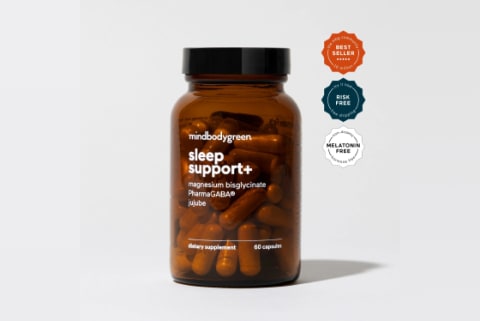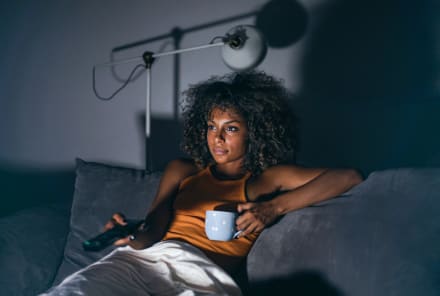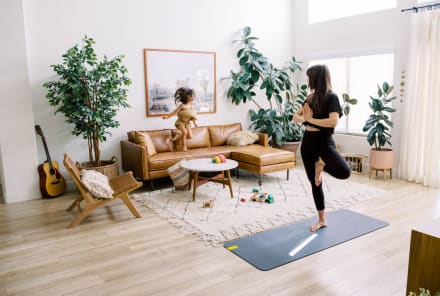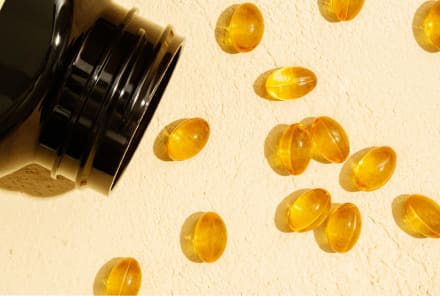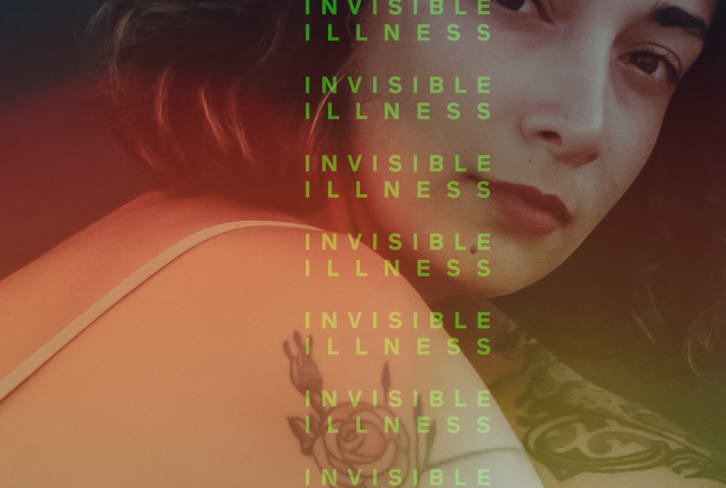Advertisement
Do Sun Lamps & Light Boxes Actually Do Anything? What Experts Say


Ashley Jordan Ferira, Ph.D., RDN is Vice President of Scientific Affairs at mindbodygreen. She received her bachelor's degree in Biological Basis of Behavior from the University of Pennsylvania and Ph.D. in Foods and Nutrition from the University of Georgia.
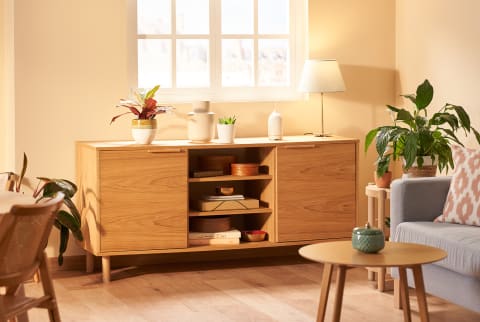
Have you ever walked into somebody's home and spotted a funky-looking white light? Sun lamps, or light therapy boxes, generate a high-intensity light, similar to the light of the sun, and they're popular during this time of year. But what are they actually supposed to do, and are they any good at doing it? We reached out to physicians to shine a light on the tool.
What are they supposed to do?
Sun lamps are used to help regulate the circadian rhythm—a biological clock that sets the time for the sleep-wake cycle and hormone release. It functions best when it is synced up to the natural rhythms of light and dark.
This is one reason physicians recommend getting outside for at least a few minutes every day: The light will send a cue to your body that it's time to be active and alert and help keep your circadian rhythm in sync.
Depending on where you live, this may be harder to do in the dead of winter, when it's cold and dark for more hours of the day. The winter blues that so many of us feel during the season is often due in part to circadian misalignment.
Light therapy boxes are used to get the body clock back on track—and improve mood, sleep, and energy levels at the same time—from the comfort of home.
Do they work?
While getting outside into natural light is best—and comes with many other health benefits—experts agree that light therapy boxes can be effective at supporting the body's rhythms.
Though you only need to use them for about 30 minutes a day, Seema Bonney, M.D., the founder and medical director of the Anti-Aging & Longevity Center of Philadelphia, says that they are "super helpful... That type of artificial light is just as helpful as natural light," she tells mbg.
Functional medicine doctor Bindiya Gandhi, M.D., agrees that "they work wonderfully by resetting and improving your overall circadian rhythm. For some people during this time, their body naturally has a hard time adjusting, so this is a great alternative," she tells mbg.
While we could still use some more rigorous research1 on the effectiveness of light therapy, we do have some evidence that they can support a brighter mood and better alertness and attention2. Sitting in front of these lights for 20 to 30 minutes a day seems to be the sweet spot. And while it depends on your personal circadian rhythm and sleep chronotype, most people will benefit from taking in their light first thing in the morning, at the same time every day.
"Early morning exposure to bright light stimulates photoreceptors in our retinas, shutting down melatonin levels and allowing cortisol to rise. It also increases the production of serotonin—one of our feel-good hormones," explains immunologist Heather Moday, M.D. She recommends sitting about 14 inches from the light, without looking into it directly.
Those who tend to feel an emotional dip during the onset of winter, or simply live in a dark space with limited windows, may benefit from the machines. However, Gandhi notes that it's important to talk to your doctor before investing in one. They should be able to help you decide which type of light box is best for you and determine whether it's just winter blues you're feeling or something more serious and ongoing like seasonal affective disorder.
The bottom line.
Light therapy boxes can be one part of a healthy and happy winter season. Other ways to keep your mood and energy levels in check include getting consistent sleep, keeping up with exercise, eating mood-supporting foods, and spending plenty of time alongside friends and family.
Watch Next
Enjoy some of our favorite clips from classes
Enjoy some of our favorite clips from classes
What Is Meditation?
Mindfulness/Spirituality | Light Watkins
Box Breathing
Mindfulness/Spirituality | Gwen Dittmar
What Breathwork Can Address
Mindfulness/Spirituality | Gwen Dittmar
The 8 Limbs of Yoga - What is Asana?
Yoga | Caley Alyssa
Two Standing Postures to Open Up Tight Hips
Yoga | Caley Alyssa
How Plants Can Optimize Athletic Performance
Nutrition | Rich Roll
What to Eat Before a Workout
Nutrition | Rich Roll
How Ayurveda Helps Us Navigate Modern Life
Nutrition | Sahara Rose
Messages About Love & Relationships
Love & Relationships | Esther Perel
Love Languages
Love & Relationships | Esther Perel
